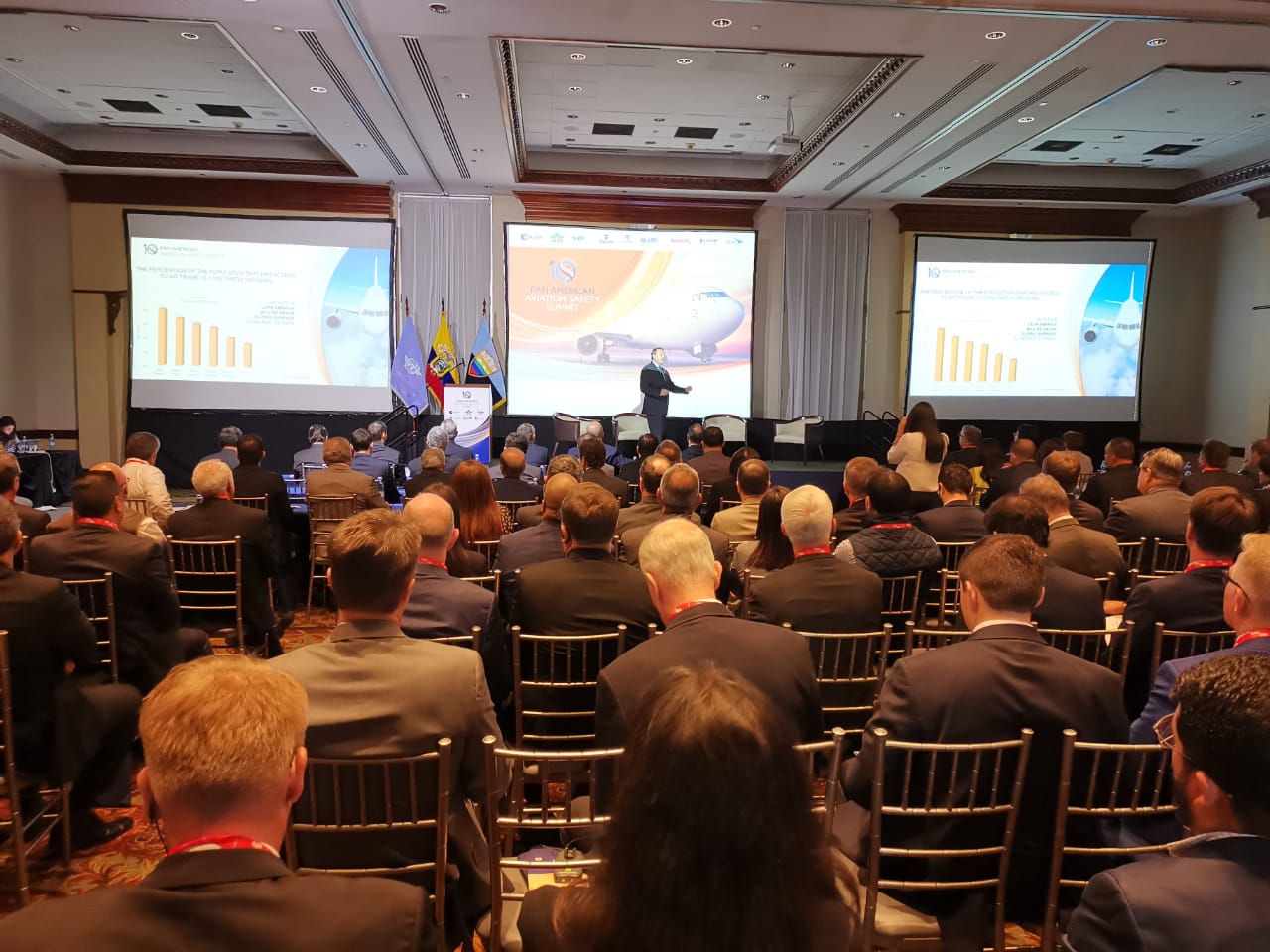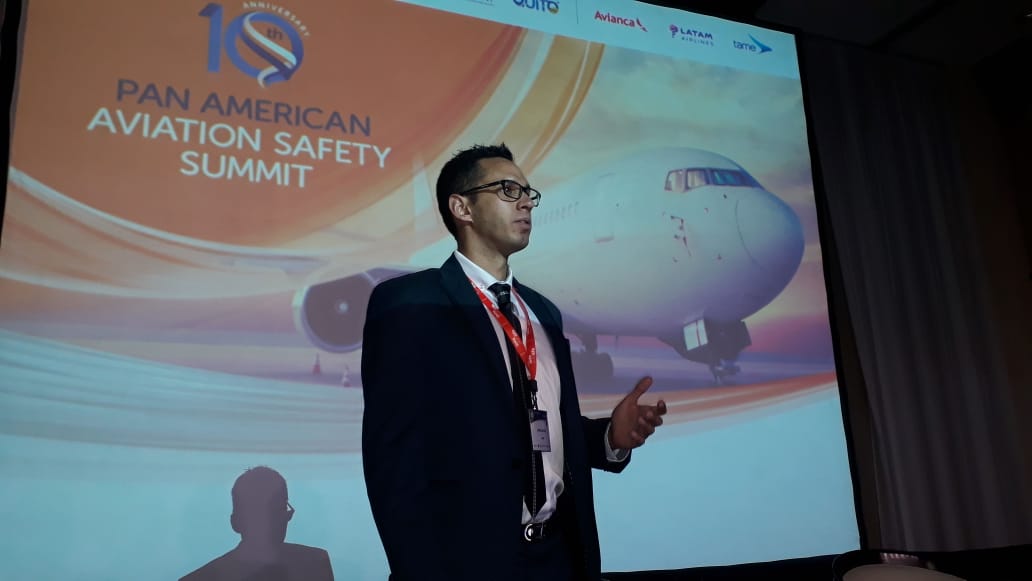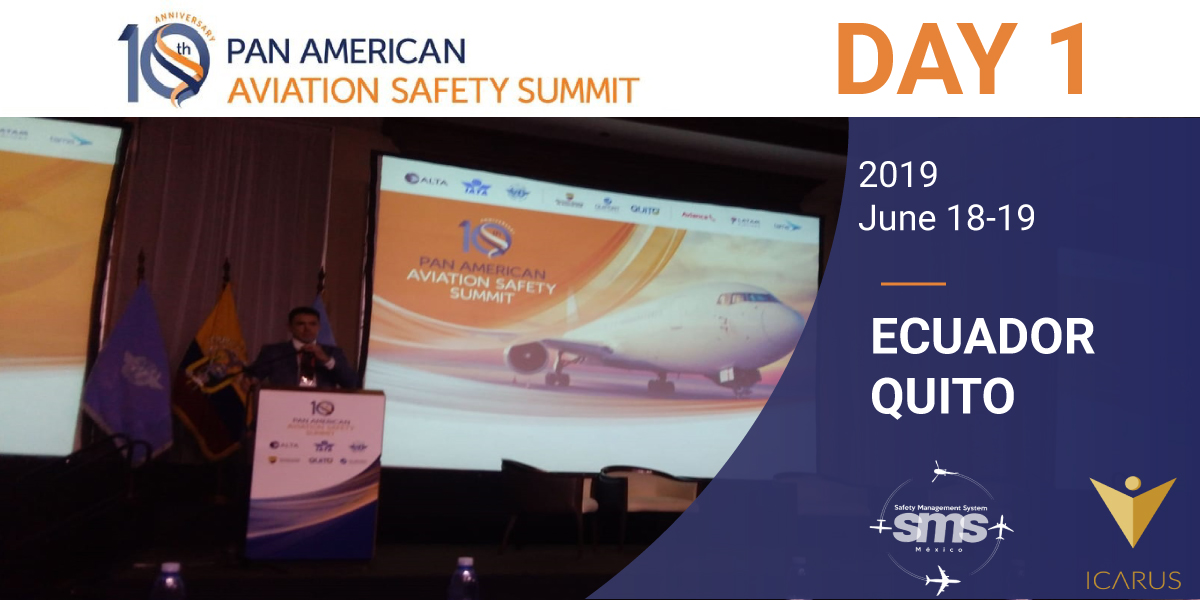QUITO, ECUADOR – 18 June 2019. The first day has finished of the interesting safety summit held in the capital of Ecuador, Quito, in the luxurious hotel JW Marriott with many lecturers that gave an insight into the problems of Latin America.
The summit was organised by ALTA (Latin American & Caribbean Air Transport Association) that host this event every year in different city in Latin America. This year it was turn to Ecuador and their DGAC (Dirección General de Aviación Civil) co-hosted this year’s event.
Lets go chronologically:
Opening ceremony
The opening ceremony was opened by Luis Felipe de Oliveira (Executive Director, ALTA) who emphasised the growth of the Latin American aviation market with 2019 already having a 7.1% increase in total number of flights. Interesting statistic was that air traffic doubles every 12 years in LATAM. The rise of middle class in LATAM has resulted to high percentage of population to have access to air travel. Luis Felipe also mentioned that safety standards is increasing and can be seen that IOSA members in LATAM have significant lower rates of accident than non-IOSA operators. The next presenter Andrew O’Brian mentioned the rise of number of passengers in Quito airport which is owned by the Canadians. However due to Canadian ownership, Quito airport remains one of the most expensive airport to fly in or out.

Collaborative Safety Teams – Update
The lecture about Regional Aviation Safety Group in LATAM focused on their concept or framework for a State or Region to achieve continued improvements in safety performance. They publish guidelines in order to help air travel stakeholders to improve safety performance together. Their goal is to connect governmental institutions (regulators, legislators, ANSP…) with the industry (airlines, airports, manufacturers…). Therefore, governmental institutions + industry = CST (Collaborative Safety Teams).
The benefits of CST are:
- provide a common frame of reference for all stakeholders
- encourage collaboration between industry and the government on common safety objectives
- avoid duplicated effort and uncoordinated strategies
ADS-B Out
Automatic Dependent Surveillance–Broadcast (ADS-B), the technology that is slowly replacing radar as the primary surveillance method for Air Traffic Control (ATC) monitoring and separation of aircraft worldwide. Mister L.P. Vanstory from Flight Standards Service told to the audience that FAA is ready for implementation of ADS-B and that ground stations are set. They will also provide performance report about airline’s fleet in an Excel file on demand on the official email address. He showed the recommendations by FAA before 1 January 2020 such as: equip aircraft for US operations, verify compliance of 14 CFR 91.227 equipment performance requirements and complete corrective actions for any NPE aircraft.
Safety Events – Part 1
I have to admit that this part was the most interesting part of the summit day 1. First, Juan Carlos Curzio from Aeromexico showed us an example of accident where their aircraft had ruptured all main landing gear tires during landing at Guadalajara Airport, Mexico and stopped in the middle of the runway with luckily without injuries.

Andres Muñez, TAME
The most interesting presentation was from mister Andres Muñez from TAME, Ecuadorian airline that showed their accident in Cuenca, Ecuador where Embraer ERJ-190 skidded off the runway on landing. Andres showed in an animated way the causes, the timeline of events, the accident and the aftermath. Cuenca airport has been reportedly in bad conditions as almost 2 months before the accident, the pilots reported bad runway conditions. However it was not fixed in due time and TAME flight crew also suffered from complacency from dispatch. The dispatch did not take into account that the runway in Cuenca was wet with light rain being reported at the time of dispatch. Dispatch also did not request the latest METAR data that became available before the aircraft took off. The runway was contaminated with water and was slippery which flight crew was not aware. Therefore, the landing was hard and the runway was not too long enough for that flight that ended up in runway excursion. After the accident Cuenca airport made adequate changes to obtain normal conditions for landings.
Summary
The summit was interesting and showcased again that aviation safety is not something that can be fixed or improved over the night. It’s a long-term process of safety awareness and performance improvements in order to move forward. Airlines, be it small or big, all suffer from lack of communication between them and civil aviation authorities. Tomorrow we follow up more interesting stories.







